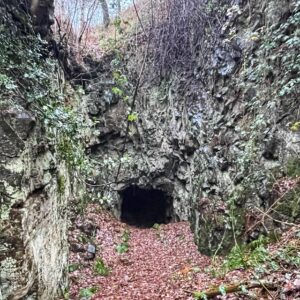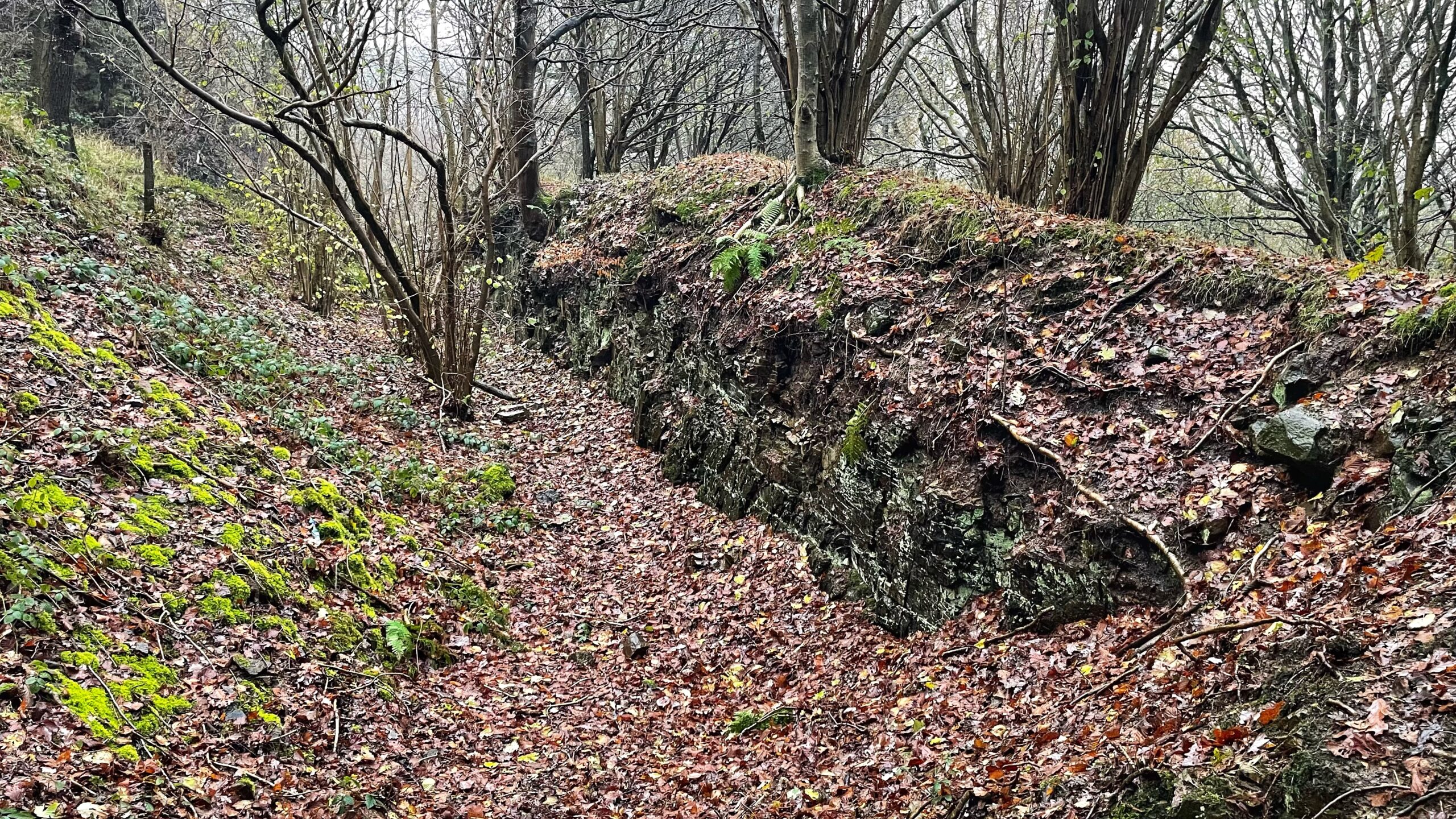In 1894 the Northern Echo carried a grim report of a inquest into a fatality in a whinstone quarry near Nettle Hole, a place that sits a good fifty metres below any workings that make sense on a modern map1THE AYTON QUARRY FATALITIES. Northern Echo – 20 November 1894. https://www.britishnewspaperarchive.co.uk/viewer/bl/0000087/18941120/010/0003. My first thought was that the incident must point towards a tunnel beneath Aireyholme Lane, built for the narrow gauge tramway, but I now think that maybe it refers to those higher workings. So, as the morning was so dreich, I kept to the shelter of the woods for a nose around these old workings can still be found clinging to the hillside.
On Wednesday, 14th November 1894, the men at William Winn’s Whinstone Quarries went about their toil with the weary steadiness of those who know stone better than they know sunlight. At this spot called Nettle Hole, four of them were clearing a tunnel choked with fallen debris.

William Watson and David Pearson loaded waste into a wagon a few feet from their colleague William Johnson. Nearby, George Stevens, who had twenty years beneath the quarry roof, began cutting into a pillar to form a new cross-cut for fresh air and quicker movement. The roof, thirty feet above their heads and arched for strength, had never given them cause for alarm. It was, they believed, as steady as the grave.
At half past three, Johnson heard a thunderous crash followed by a single groan. He turned, called out to Stevens and received a stark reply: Watson and Pearson lay buried under a sudden fall of rock.
Johnson ran to them. Watson was only partly covered. Pearson leaned against the working face with a great slab pressing upon his foot. Johnson dared to hope that Pearson was merely dazed, then dashed for help. Together the men hauled away stone until they reached the heart of the calamity. The slab that struck Watson alone weighed more than fifty kilograms.
Hope drained away. Both Watson and Pearson were dead.
The deadly stone had not slipped from the wall they were clearing but had dropped straight from the roof that all had trusted.
At the inquest, Johnson and Stevens spoke plainly. They had believed the roof sound. The jury returned a verdict of accidental death and cleared William Winn of blame, stating that he had taken every reasonable step to protect his workforce.
Beyond the network of paths that wind through Cliff Rigg wood, the old workings lie smothered in growth, visible only in the lean months when the trees stand bare.
William Winn himself had carved out a solid career in whinstone. In 1851 he was recorded as a labourer; by the end of the century he was a quarry owner, employing 80 men. He had leased workings at the western end of Cliff Rigg and at Slacks Wood. By 1868 the latter even had its own railway siding, allowing him to sell stone in grades from rough to finely prepared setts2Pepper, R. and R. J. Stewart. “The Mineral Tramways of Great Ayton”. Narrow Gauge Railways Society ISBN 0 9507169 5 2 1994.
From 1874 to 1884 he ran the two sites separately. Then, upon securing the main Cliff Rigg Royalty from Leeds Corporation, he tied his empire together. A new tramway ran along the foot of the wood, linking Slacks Wood to the Cliff Rigg transhipment yard. The combined workings and their tramways kept going until around the end of the First World War. Today they lie buried in greenery and silence. Needless to say, I kept well clear of this adit.
- 1THE AYTON QUARRY FATALITIES. Northern Echo – 20 November 1894. https://www.britishnewspaperarchive.co.uk/viewer/bl/0000087/18941120/010/0003
- 2Pepper, R. and R. J. Stewart. “The Mineral Tramways of Great Ayton”. Narrow Gauge Railways Society ISBN 0 9507169 5 2 1994

Leave a Reply